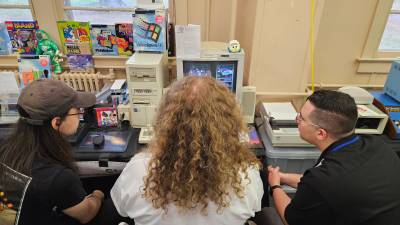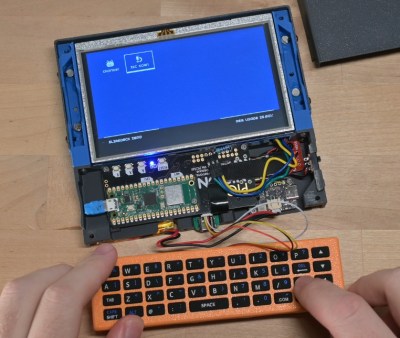The Bendix G-15 refurbished by [David at Usagi Electric] is well known as the oldest fully operational digital computer in North America. The question [David] gets most is “what can you do with it?”. Well, as a general-purpose computer, it can do just about anything. He set out to prove it. Can a 1950s-era vacuum tube computer handle modern physics problems? This video was several years in the making, was a journey from [David’s] home base in Texas all the way to CERN’s Large Hadron Collider (LHC) in Switzerland.
 The G-15 can run several “high-level” programming languages, including Algol. The most popular, though, was Intercom. Intercom is an interactive programming language – you can type your program in right at the typewriter. It’s much closer to working with a basic interpreter than, say, a batch-processed IBM 1401 with punched cards. We’re still talking about the 1950s, though, so the language mechanics are quite a bit different from what we’re used to today.
The G-15 can run several “high-level” programming languages, including Algol. The most popular, though, was Intercom. Intercom is an interactive programming language – you can type your program in right at the typewriter. It’s much closer to working with a basic interpreter than, say, a batch-processed IBM 1401 with punched cards. We’re still talking about the 1950s, though, so the language mechanics are quite a bit different from what we’re used to today.
To start with, [Usagi’s] the G-15 is a numeric machine. It can’t even handle the full alphabet. What’s more, all numbers on the G-15 are stored as floating-point values. Commands are sent via operation codes. For example, ADD is operation 43. You have to wrangle an index register and an address as well. Intercom feels a bit like a cross between assembler and tokenized BASIC. Continue reading “CERN’s Large Hadron Collider Runs On A Bendix G-15 In 2025”



 An exhibit like this isn’t thrown together overnight. [Commodore Z] and [Ms-Dos5] worked for months to assemble the right mix of desktops, laptops, and peripherals to showcase Windows 95. Many of the computers are networked as well – which was no easy task.
An exhibit like this isn’t thrown together overnight. [Commodore Z] and [Ms-Dos5] worked for months to assemble the right mix of desktops, laptops, and peripherals to showcase Windows 95. Many of the computers are networked as well – which was no easy task.













